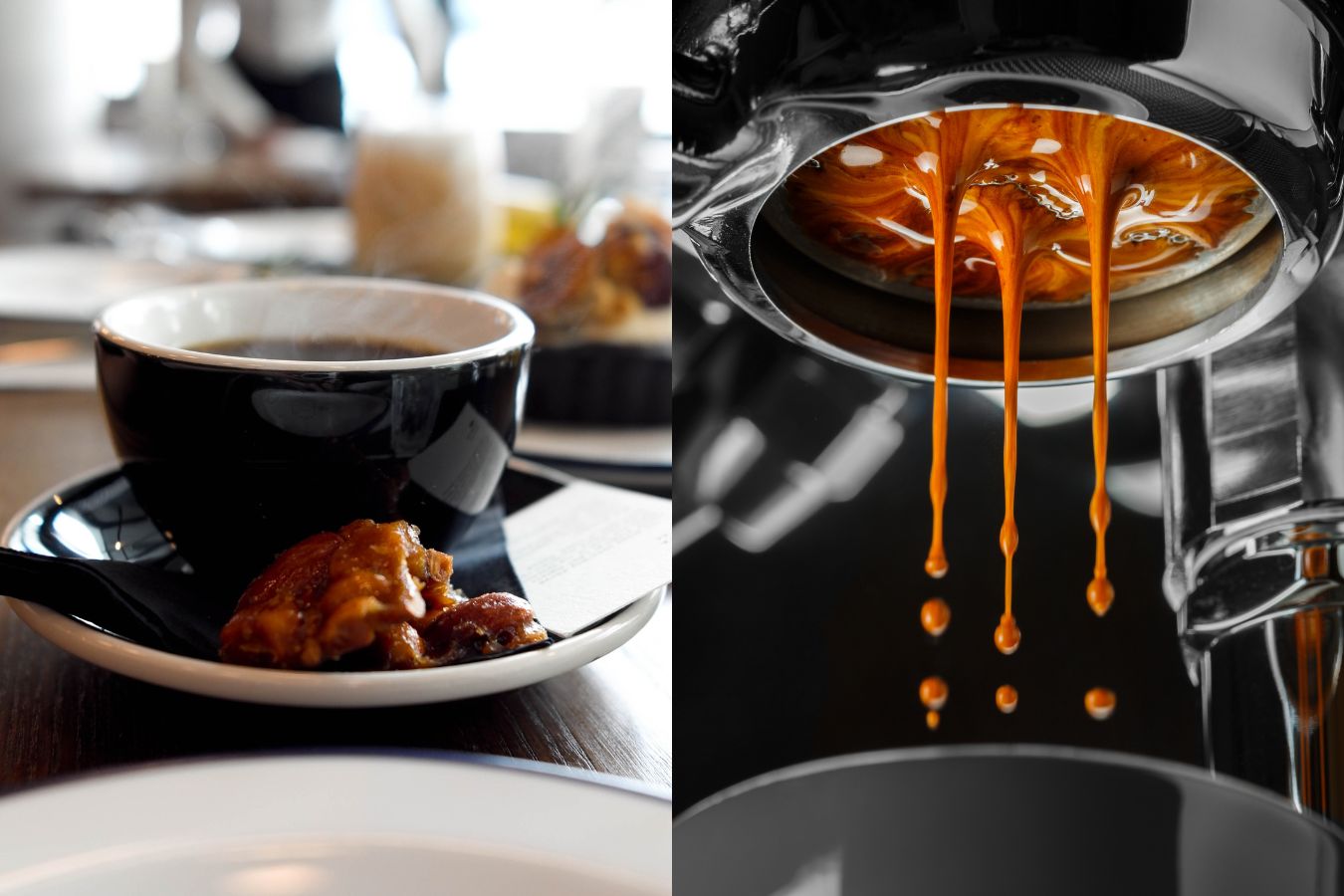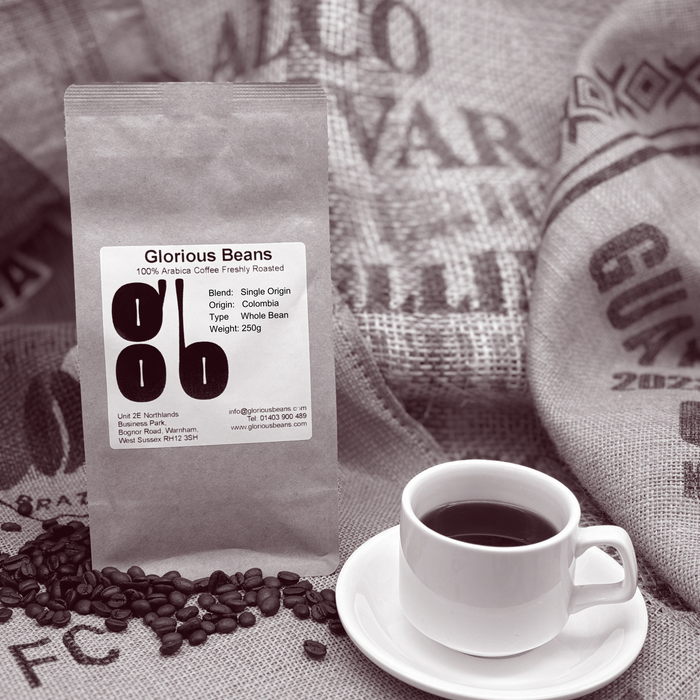Coffee Beans 101: Every Little Thing You Required to Learn About Espresso and Blended Coffee Beans
When it comes to coffee, recognizing the subtleties of espresso and combined beans can change your day-to-day cup. From the growing procedure to toasting strategies, every step plays a role in your coffee experience.
Comprehending Coffee Beans: Varieties and kinds
When diving right into the globe of coffee, recognizing the kinds and selections of coffee beans is crucial for every fanatic. Arabica beans are recognized for their smooth, intricate tastes and reduced caffeine material, making them a preferred among coffee aficionados.
Ethiopian Yirgacheffe offers intense flower notes, while Colombian beans offer a healthy flavor profile. By acquainting on your own with these beans and their flavors, you'll boost your coffee experience and make more educated selections in your developing trip.
The Expanding Process: From Seed to Bean
When you explore the journey of coffee, all of it begins with seed selection strategies that set the foundation for quality. From there, growing and gathering play necessary duties in making sure the beans prosper. Handling techniques transform those harvested cherries right into the coffee beans you enjoy.
Seed Choice Methods
Picking the best seeds is crucial for generating top notch coffee beans, as it lays the structure for the whole growing process. You need to start by choosing seeds from trustworthy sources that prioritize top quality and hereditary variety. Try to find ranges recognized to grow in your particular climate and soil problems. Take notice of the seed's age and storage space problems, as fresh seeds have a tendency to sprout far better. When possible, choose organic seeds to reduce direct exposure to dangerous chemicals. Think about the disease resistance of different selections, as this can substantially affect your return. Finally, don't think twice to seek advice from with regional farmers or experts to obtain understandings right into the most effective seed choices for your area. This knowledge will improve your coffee-growing experience.
Growing and Harvesting
As you support your coffee seeds into thriving plants, understanding the growing and harvesting procedure is essential for accomplishing the most effective taste and high quality. Start by growing your seeds in well-draining dirt, preferably in a shaded area to shield them from straight sunlight. As your plants expand, maintain regular wetness, and be mindful of their need for nutrients. Trim regularly to advertise air flow and healthy and balanced development.
When it comes time to harvest, search for ripe cherries, which normally transform a vivid red. Hand-picking is typically the ideal approach to guarantee just the ripest cherries are selected. Timing is vital; gathering too very early or far too late can impact the taste account of your beans. Welcome perseverance and care, as this is where top quality begins.

Handling Approaches Described
When you've collected your coffee cherries, the next important action is refining them to transform those lively fruits into the beans you'll make. There are 2 primary techniques: the dry procedure and the wet procedure. In the completely dry procedure, you spread out the cherries out in the sunlight to completely dry, enabling the fruit to ferment and give unique tastes to the beans. On the other hand, the damp process entails eliminating the fruit quickly and fermenting the beans in water, leading to a cleaner taste. After handling, the beans are hulled, arranged, and normally dried once again. Each approach impacts the taste account, so trying out both can aid you find your favored brew. Understanding these approaches is vital to enjoying your coffee experience.
Toasting Methods: How Taste Is Established
When it involves toasting coffee beans, recognizing roast levels is key to disclosing their special flavors. Each roasting technique impacts the scent and enhances the taste growth procedure, giving you a richer coffee experience. Allow's explore exactly how these elements come together to raise your day-to-day mixture.
Roast Levels Described
Roast degrees play a vital duty in shaping the taste profile of your coffee. You'll enjoy brilliant level of acidity and fruity notes when you select a light roast. As you relocate to a tool roast, you'll observe a balance of sweetness and complexity, often highlighting chocolate or caramel flavors. Dark roasts, on the other hand, provide bold, smoky characteristics with less acidity, making them durable and rich. Each level arises from different roasting times and temperatures, impacting the beans' chemical composition. By recognizing these levels, you can better choose a coffee that matches your taste choices. Experiment with various roasts to uncover which one resonates with you, boosting your total coffee experience and enjoyment.
Impact on Fragrance
The roast level not only affects the preference of your coffee yet likewise substantially affects its scent. When you choose a light roast, you'll commonly notice bright, floral notes that can make your coffee smell vivid and fresh. As the beans dim, the aroma shifts; a tool roast draws out more balanced, caramelized aromas, while a dark roast often tends to feature bold, great smoky undertones. Each roasting strategy releases different unstable compounds, forming exactly how your coffee smells. In addition, the quality of the beans plays a crucial role; freshly roasted coffee launches extra fragrant oils, improving that attracting fragrance. So, take note of the roast level-- it's essential to revealing the Read More Here complete aromatic experience of your mixture.
Taste Development Refine
As you check out the taste advancement procedure, you'll discover that roasting strategies play a critical duty in shaping the taste profile of your coffee. The roasting temperature level and time directly affect the level of acidity, sweetness, and anger of the beans. Light roasts keep even more of the bean's initial flavors, highlighting floral and fruity notes. Medium roasts balance acidity and body, using a well-rounded taste. Dark roasts, on the other hand, draw out bold, smoky features while decreasing the bean's fundamental high qualities. Throughout toasting, chain reactions, like the Maillard reaction and caramelization, change the beans and enhance their intricacy. Trying out different roasting degrees can aid you find your excellent mixture, so don't hesitate to taste and discover the abundant spectrum of tastes!
Espresso vs. Blended Coffee: Trick Distinctions
Coffee and combined coffee each offer distinct experiences that satisfy different preferences and choices. Coffee is a concentrated coffee brewed forcibly warm water with finely-ground coffee beans, resulting in a rich, strong flavor and a creamy layer of crema on the top. It's typically appreciated as a shot or used as a base for drinks like cappucinos and coffees.
On the other hand, blended coffee incorporates different beans from different regions, creating an extra balanced taste account. You'll usually discover blends that highlight sweet taste, acidity, or body, making them functional for different brewing techniques. While coffee concentrates on strength, combined coffee may use a more comprehensive variety of tastes that can alter with each sip.
Ultimately, your choice between coffee and mixed coffee boils down to your individual preference. Whether you hunger for a fast shock or a leisurely mug, both choices have something delicious to use.

Brewing Methods: Opening the Perfect Cup
When it concerns developing coffee, locating the right method can transform your experience and elevate your cup. Each brewing method has its distinct beauty and can substantially impact your coffee's taste and fragrance. Making use of a French press permits you to enjoy a rich and robust mixture, while a pour-over approach supplies a clean, bright cup with unique tastes.
If you choose coffee, buying a quality equipment can help you grasp the art of pulling shots. For comfort, a single-serve capsule system uses rate without compromising preference.
Don't forget cold mixture, which supplies a smooth, much less acidic coffee ideal for hot days. Experiment with different techniques to uncover what resonates with your taste. Each developing technique opens a brand-new world of possibilities, so put in the time to discover and discover your excellent cup. Pleased brewing!
Sampling Notes: Identifying Flavor Profiles
Just how can you truly value your coffee if you don't know what tastes to seek? Sampling notes are your guide to comprehending the complex globe of coffee. When you sip, take note of the initial tastes that strike your taste buds. You might spot fruity notes, like berry or citrus, or maybe a nutty undertone. As you proceed to taste, discover how the flavors develop-- this is referred to as the "finish." Some coffees may leave a chocolatey or caramel aftertaste, while others may have a bright, clean finish.
Consider the body of the coffee, as well; is it light and airy or thick and syrupy? Do not neglect level of acidity; an intense acidity can include vigor, while a reduced acidity might give a smoother experience. By determining these taste accounts, you'll deepen your connection with each cup, making coffee sampling a delightful journey of exploration.

Tips for Picking and Storing Coffee Beans
Saving and choosing coffee beans correctly can greatly improve your developing experience. Begin by choosing top quality beans that fit your taste - SOE.
As soon as you have your beans, keep them in an impermeable container to protect against direct exposure to light, wetness, and air. A dark, great location functions best, so avoid maintaining them in the refrigerator or fridge get more freezer, as this can present moisture. Just grind the quantity you need to maintain quality; whole beans keep taste longer than pre-ground coffee.
Last but not least, try to use your beans within two to 4 weeks after opening up for peak preference. Following these ideas will ensure your coffee remains tasty and delightful, elevating your daily mixture to new heights.
Frequently Asked Concerns
The Length Of Time Do Coffee Beans Keep Fresh After Toasting?
Coffee beans remain fresh for regarding 2 weeks after toasting - SOE. site web You must save them in a closed container, away from light and wetness. After that, their taste and scent begin to decrease substantially

Can I Mix Different Coffee Bean Varieties?
Absolutely, you can mix different coffee bean selections! Trying out blends can improve flavors and produce a special preference profile. Simply ensure to stabilize the strengths and characteristics of each variety for the very best outcomes.
What Is the Perfect Grind Size for Espresso?
For coffee, you'll desire a great work dimension, concerning the structure of table salt. This allows optimal extraction, resulting in a rich, savory shot. Experiment a bit to find what fits your preference best!
How Does Elevation Affect Coffee Bean Flavor?
Altitude impacts coffee bean taste by influencing the growth rate and chemical composition. Higher altitudes result in slower growth, which enhances acidity and intricacy, offering your coffee a vivid and one-of-a-kind taste you won't neglect.
Are There Decaffeinated Versions of Coffee Beans?
Yes, there are decaffeinated versions of coffee beans. You can take pleasure in a rich espresso taste without the caffeine kick. Simply seek "decaf" blends at your regional coffee bar or specialty store.
Coffee Beans 101: Whatever You Need to Know Regarding Espresso and Blended Coffee Beans.
When diving into the world of coffee, understanding the kinds and ranges of coffee beans is necessary for every fanatic.When it comes to roasting coffee beans, comprehending roast degrees is key to disclosing their special flavors. Coffee is a focused coffee made by requiring warm water with finely-ground coffee beans, resulting in a rich, strong taste and a velvety layer of crema on top.On the other hand, blended coffee combines numerous beans from various regions, developing a more balanced flavor profile.